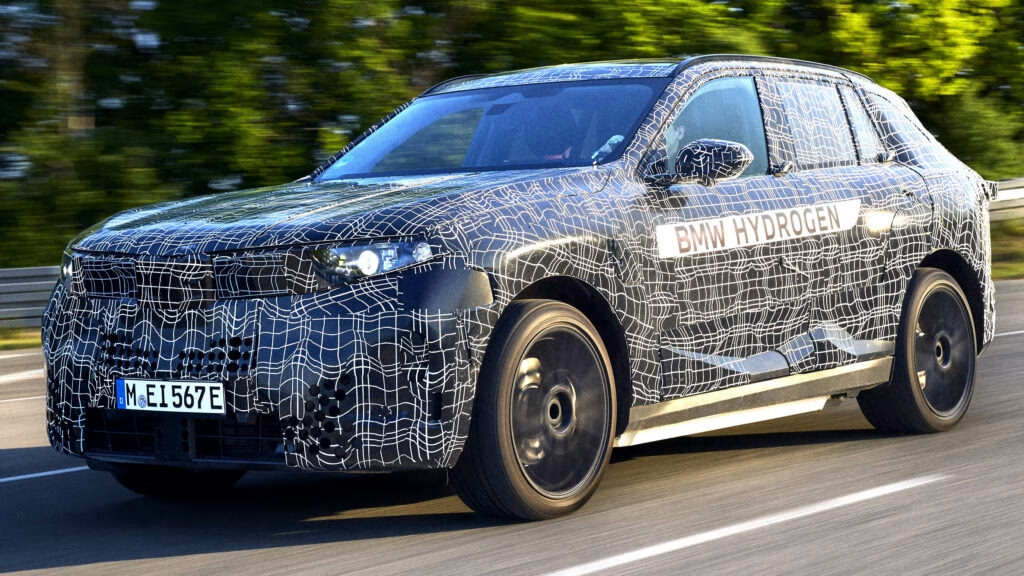What Sets the Next BMW X5 Apart From Its Predecessors?
BMW’s next-generation X5 isn’t just another SUV refresh—it’s a bold leap into the future of mobility. For the first time, buyers will be able to choose from five distinct powertrains: traditional petrol, diesel, plug-in hybrid, fully electric, and, making headlines, a hydrogen fuel cell electric vehicle (FCEV). That’s right—BMW is putting real muscle behind hydrogen, a technology often discussed but rarely delivered at scale.
This move isn’t just about variety for the sake of it. It’s BMW’s answer to a rapidly changing automotive landscape, where flexibility and sustainability are becoming non-negotiable. By offering such a broad spectrum of options, BMW is betting that the X5 can be the right fit for drivers across the globe, no matter where they are on the electrification journey.
How Does the New Hydrogen System Work, and Why Is It a Big Deal?
Let’s talk hydrogen. BMW’s third-generation hydrogen system, developed in close partnership with Toyota, is a significant step forward. It’s 25 percent more space-efficient and packs more power than previous versions. That means you get more range and performance without sacrificing cargo space or comfort—a common complaint with early FCEV attempts.
While BMW hasn’t released all the nitty-gritty specs yet, early indicators point to better energy efficiency and longer driving ranges. The company’s pilot fleet of the current iX5 Hydrogen already demonstrated that hydrogen can deliver a premium driving experience. Now, with the upcoming production model, BMW aims to make FCEVs a real alternative for everyday drivers.
Why Is BMW Betting on Hydrogen When EVs Are Booming?
It’s a fair question. Battery-electric vehicles (BEVs) are dominating headlines, but hydrogen offers some unique advantages. Refueling takes just a few minutes—comparable to filling up with gasoline—and range anxiety is virtually eliminated. Plus, the only emission is water vapor. For long-distance drivers or those in regions where charging infrastructure is lagging, hydrogen could be a game-changer.
BMW’s commitment goes beyond the vehicle itself. The company is actively working to expand the hydrogen refueling network, starting in Germany and France. According to the Hydrogen Council, there are now over 1,000 hydrogen stations planned or operational worldwide, with Europe leading the charge. BMW’s involvement could help accelerate this rollout, making hydrogen a more practical option for more people.
What’s New in the X5’s Design and Technology?
The next X5 will debut BMW’s Neue Klasse design language, which means a sleeker, more modern look. Gone are the oversized kidney grilles of recent models. Instead, expect a more refined front end with smaller grilles and headlights that blend seamlessly into the fascia. The side profile is smoother, and while the prototype sports provisional taillights, the production version will likely feature cutting-edge LED designs, borrowing cues from the latest iX3.
Inside, you can anticipate the latest in digital displays, connectivity, and driver assistance features. BMW has been pushing the envelope with its iDrive system and over-the-air updates, so the new X5 should feel as smart as it looks.
How Will the Five Powertrain Options Affect Buyers?
Choice is the name of the game. Whether you’re a traditionalist who loves the sound of a petrol engine, a commuter looking for plug-in hybrid flexibility, or an early adopter eager to try hydrogen, the X5 will have you covered. This approach isn’t just about hedging bets—it’s about meeting drivers where they are.
For example, in regions with robust charging infrastructure, the fully electric X5 might be the go-to. In areas where hydrogen is available, the FCEV could be the most convenient and sustainable choice. And for those who aren’t ready to make the leap, petrol and diesel options remain.
What’s the Timeline for the Hydrogen X5, and Who’s It For?
BMW is targeting a 2028 release for the iX5 Hydrogen. That gives the company time to fine-tune the technology and, crucially, support the build-out of refueling stations. The initial focus will be on markets with government support for hydrogen, but as infrastructure grows, expect availability to expand.
Who’s the target customer? Early adopters, certainly, but also fleet operators and drivers who need long-range capability without the downtime of charging. Think business travelers, rural drivers, and anyone who values flexibility and sustainability.
How Does This Fit Into the Bigger Picture of Decarbonization?
Joachim Post, a member of BMW’s board, summed it up: hydrogen has an essential role to play in global decarbonization. The International Energy Agency (IEA) echoes this, noting that hydrogen could account for up to 18 percent of final energy demand in a net-zero scenario by 2050. By pushing forward with hydrogen, BMW is positioning itself as a technology leader, not just a follower of trends.
The big takeaway? BMW’s next X5 isn’t about perfection—it’s about smarter adjustments. Start with one change this week, and you’ll likely spot the difference by month’s end. Whether you’re drawn to hydrogen, electric, or another powertrain, the future of driving is all about choice—and BMW is making sure you have plenty of it.

